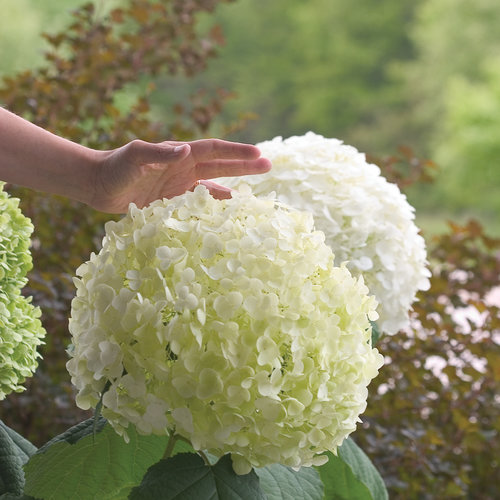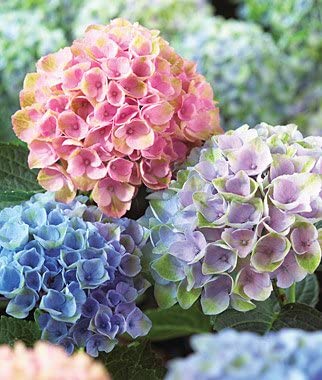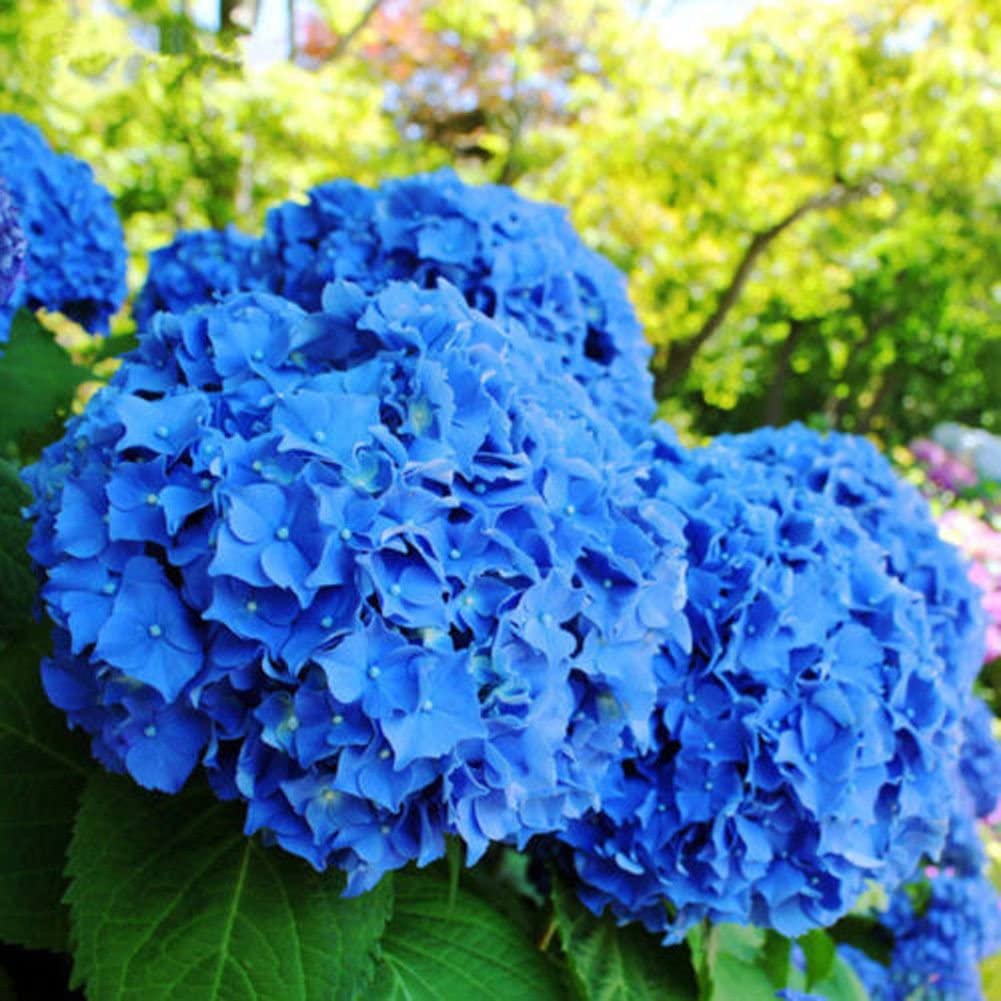If you’re looking for a solution to the Hydrangea Leaves Turning Yellow issue, let me first inform you that hydrangeas are flowering plants with over 74 different species that may be found in America and Asia. These plants are well-liked because of their eye-catching flowers and normal-looking green foliage. Many people grow this plant because of the soft, bright blossom that resembles a pom-pom and because of the plant’s stunning natural hue. The only drawback is that when there is an issue, the foliage doesn’t appear the same. Many individuals struggle with problems like their hydrangeas’ leaves becoming yellow, and occasionally altering their needs has a detrimental effect on their growth. We must ascertain the primary factors that led to the appearance of the leaves in the first place. Let’s find a solution to this issue.
Table of Contents
Hydrangea Leaves Turning Yellow
Overwatering causes hydrangea leaves to become yellow because it removes vital nutrients. Additionally, a yellowing hydrangea plant may affect its decomposing root system. The main cause of yellowing in these plants is nutrient shortage; typically, it indicates that the plant may have insufficient nitrogen in the soil, which results in the loss of color in the leaves. Adding a particular kind of fertilizer could balance the nutrients and address the issue with the yellow hydrangea leaves. During the growing season, these plants receive plant food every month.
Other significant causes include mishandling of care, which resulted in plants being soggy. Read on to learn the reasons why hydrangea leaves become yellow:
1. Low in Nutrients Like Nitrogen
When hydrangeas lack a particular nutrient, that is one of the main causes of their yellowing. In the growing season, which is from spring to summer, these plants require regular fertilizer feedings. They also require adequate nutrition before going into blossom.
Iron and nitrogen deficiencies in hydrangeas prevent them from growing properly. The leaves began to yellow and fall, indicating an incomplete flowering phase, and they began to dry up.
2. Overwatered Soil
The second most frequent cause of yellowing hydrangea leaves is overwatering, even though these plants need a damp but not wet environment. Therefore, you should be cautious while watering.
When too much water is retained in the soil, the roots begin to rot and get moist, which causes the plant to lose its leaves and eventually perish. Reduce the watering now to address the issue and determine whether it is working or not.
When you are repotting the plant, you can solve overwatered soil that causes soggy conditions by placing small stones on the base of the container. This will help with the drainage problem.
The top layer of soil determines how frequently you need water; if it feels dry, water immediately; otherwise, wait until it has dried out to within an inch or two of the top soil.
You can resolve this issue by adhering to the two conditions mentioned above.
I’ll be talking about some more challenges that pertain to hydrangeas and its varieties.
3. Temperature changes
These plants prefer warm regions and perform best in temperatures between 69 and 72 degrees Fahrenheit. When in low temperatures, they may freeze and pass away more quickly. It may be difficult for this plant to survive when climatic circumstances see a sudden spike or dip.
Also, place this in a spot away from strong winds because strong winds can cause hydrangea leaves to turn yellow or even stunt their growth.
According to Lotusmagus.com, growing your plant close to a wall will give it support for normal growth as well as wind protection. To lessen the impact of the wind, put it close to the fence outside.
Due of its weak disease resistance, the draft variety of hydrangeas is more susceptible to illness. Keep them in the ideal room temperature throughout the winter to prevent the plant from freezing at temperatures below 40 degrees Fahrenheit. If you take good care of them, the plant will survive and grow back once spring arrives, allowing you to replant it in its original location where it will remain throughout the summer.
4. Soil Underwatered
The leaves of your plant will quickly start to turn yellow and then fall off if the soil around the root area feels consistently dry. How would you deal with this issue if you initially notice yellowing of the leaf’s tips before it spreads to the entire leaf? Let’s see.
First, dirt shouldn’t be entirely dried out; instead, water should be poured on top to keep it damp. Put some mulch on the soil’s surface if it is drying out more quickly; this will assist the water stay for a longer duration. The problem can be resolved by pouring water, which you can do every day.
You can use conifer cones, wood chips, straws, or shredded conifers as mulch.
If you placed these hydrangeas close to a large tree, there may be issues because trees may readily collect water from the side soil and even take the water from other plants if necessary. The other plant will then experience a decrease in water, which makes it sad since its leaves will begin to fade or drop.
5. Leaves burn because of Heavy Sun
If you place your plant in direct sunlight, it may experience leaf burning. In certain circumstances, the first plant may continue to dry out and exhibit some yellowing of the leaves. Therefore, pick a spot that is suitable for the plant.
Sunlight is bad for indoor plants since they detest it and can have a significant negative impact on the foliage.
6. Lack of light
Bright light is preferred for these hydrangea plants, but no direct sunlight. The root will rot in water if they don’t receive enough light, which will cause the leaves to become yellow.
You should pick a location where it receives some sunshine, with early sunlight being recommended because light does not harm plants but instead gives them energy and promotes their health. And those two to three hours of light are actually pure, but keep in mind that afternoon sun is still a concern, so position it where it only receives morning light.
Leaves can develop unsightly burn patches when exposed to direct sunlight. Additionally, because they don’t like being in the dark, place them in a partially shaded spot. You may even put them under a large tree or a large shrub.
7. Over Alkaline Soil
Because the soil of hydrangeas is more alkaline than acidic, this can contribute to the leaves turning yellow. The pH of the soil must be acidic rather than basic.
All hydrangea cultivars like acidic soil and detest basic or alkaline soil. Therefore, before doing any potting, be careful to check your soil for that; if it is, then perhaps it is the cause of the yellowing.
You need to add citric or acetic acid to the soil to raise its pH and make it more acidic. Lime juice can also help; use 4-5 cc per 800 ml of water. Mulch should be added to the soil if you want it to retain water.
8. Additional Information
If your hydrangeas are turning yellow, you should add magnesium-containing epsom salt to the soil. However, if any variety displays additional symptoms, such as yellowing leaves that form a pattern “V,” this indicates a magnesium deficiency in the soil ( you need to put 20g crystals in about 9 liters of water and this was pour on the root section of the plant).
Yellowing of the leaves is another sign of iron insufficiency, which is treatable with iron chelates. But the application of fertilizer, which can be applied from early spring to mid-summer, is the only remedy that can address all of these inadequacies.
Tips to Prevent Hydrangea Yellowing of Leaves
Other issues with hydrangea leaves
Brown Spots on Hydrangea leaves
These brown spots on Hydrangea leaves often don’t affect the entire plant, but they do make it look unpleasant. They are caused by a bacterial or fungal infection on the plant, and they usually appear once in late summer or early fall. You can prune or pinch off a few of those leaves to keep it fresh. The plant will survive without anything, but the leaves will turn yellow and fall off. These leaves will sprout in the spring of the next year, and the blooming won’t be impacted by the illness.
Here are two fungi that negatively impact hydrangeas.
When a plant has both leaf spots, the green leaves turn pink or brown, and you may also notice most of the spots near the tip of the leaf before moving to the middle of the base.
Xanthomonas campestris is one of the pathogens mentioned when talking about bacteria that cause this leaf mark. As a result, different areas on the veins and lower half of the leaves will typically turn red or purple. Vein spots will go through the line and extend to additional leaf section areas.
Therefore, you might be wondering how to handle these brown spots.
You should most likely spray garlic oil, compost tea, or hydrogen peroxide (which is well-known) on the affected leaves as well as the entire plant.
Fungicides can be used chemically to address this if you want a simple remedy without having to put in any effort. Depending on how severe the infection is, you can use this every 15 days.
Powdery Mildew on Hydrangea
Use a Neem oil that acts on them right away or a fungicide if you can if you notice any of these on your leaves because it is easily identifiable and leaves white powder on the leaves. As this consumes the hydrangea’s energy and destroys the plant, it may be damaging to the entire plant.
Elephant Ear Plant Yellowing Leaves: Why and Solutions
FAQ’s
The signs of an overwatered hydrangea include wilted foliage, falling leaves, and bottom leaves that are touching the ground. In a plant that receives insufficient water, the same thing occurs. However, when given too much water, leaves start to turn yellow at the tips.
Care, Propagation, Pruning, and Indoor Benefits of Lavender Plants (Sale)
Can yellowing leaves turn green again?
No Yellow leaves cannot become green; instead, they are a sign that plants are having watering problems and may be receiving insufficient light. Other issues include winter weather, an unfavorable temperature, pets, and infections that have been recorded make recovery more difficult. This stress in plants can occasionally be brought on by position changes.
Should I remove dead leaves from hydrangea?
It is fine to remove the dead leaves from hydrangeas, and doing so will only encourage new development. After it has blossomed, pruning can be done. Crossing stems and sick stems can both be removed. Additionally, those stems that droop and split in the middle. Long stems can be cut to the plant’s advantage as well.
Buying Spanish Lavender Plants: [Tips and Care Guide]
Do hydrangea leaves turn yellow in autumn?
Fall is when some hydrangea kinds’ leaves turn yellow, and in other circumstances, hydrangea yellow leaves are an indication that the plant is getting older. Overwatering and a lack of nutrients in hydrangeas are further causes. By applying fertilizer and using less water, you can solve these issues.
Why are the tips of my hydrangea leaves turning brown?
If the tips of hydrangea leaves turn brown, too much fertilizer has weakened the plant’s root structure. If aluminum sulfate was the problem, the color of the hydrangea blossoms may vary. If it was used heavily, aluminum sulfate can also harm the root. When fed excessively, browning of the leaves would have scorched the roots.
After you start doing your study, taking care of your plants is not difficult. They need ongoing attention to keep it healthy and to stop any problems from getting out of hand.
Please forward this article to your friends who might find it useful if you enjoyed it. Thank you, and if you’d want to learn more about other plants, visit our website at lotusmagus.com. We keep producing quality writing.
Last Words
By reading all the issues I addressed on “Hydrangea Leaves Turning Yellow,” I hope you may find the solution. If you’re interested in reading more blogs, please see the list of links below.
How to Prune a Gold Mop Cypress and Care Instructions
How Often Should English Ivy Be Watered? (Requirement, Soil, Frequency)
Calla Lily Flower: Meaning & Symbolism, Blooms (Bulbs, Seeds)
Is My Nickel String Dying? Understand the Cause and the Fix
8 Reasons Why Hydrangea Leaves Are Falling Off (with Solution)



